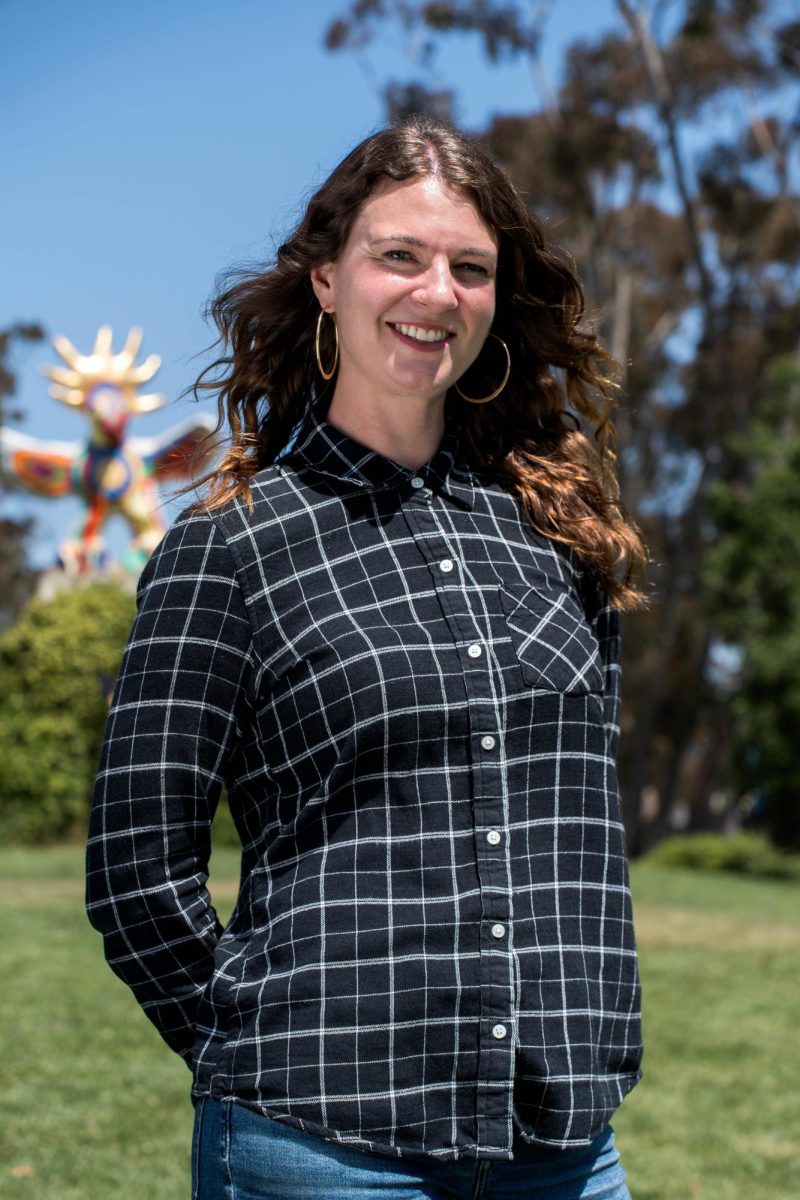
Q) What do you think is the most popular resource the lab offers?
A) 3-D printing is the DML’s most popular service by far, and the most unique. We’re the only place on campus offering free 3-D printing to all UCSD affiliates. Since we opened in October, the printers have been consistently booked. Though we offer all sorts of multimedia services, I think we’re really carving out an important role on campus supporting 3-D modeling. There are a ton of things you can do with a 3-D model. You can animate it, stick it in a virtual environment, create physical versions in any size. You can view it from any angle, with any color or lighting. The applications bridge across all disciplines. As virtual reality and augmented reality start take off, these capabilities will only become more important.
Q) How is the DML transforming the way professors design their curricula?
A) The DML is giving instructors, who normally lack access to production facilities, the ability to create academic projects which require students to create physical objects. Making is a revolution in education. It engages learners in a way which traditional instruction often fails to. We hope to enable instructors from every discipline to leverage that effect.
Q) In what ways do you think the Digital Media Lab has changed the way students approach or think about multimedia projects?
A) I hope that we’ve made media projects a little less daunting. We act as a starting point for a huge range of projects, and I think the most important part is having someone to help with the most basic questions. What resources are available? What software should I use? What processes or methods should I follow? Which parts am I going to need extra help with?
Q) What is the process of creating a 3-D-printed object at the lab?
A) The process starts with an digital model. These can be created by the user, scanned from an existing physical object, or simply downloaded from a 3-D model database like thingiverse. The next step is to reserve time on a 3-D printer, which can be done in person or at libraries.ucsd.edu/dml. DML staff can then help you open the file in a 3-D printing program, make little tweaks (if necessary) and send it to the printer.
Q) What type of guidance does the DML provide for those inexperienced with this type of technology? Do you have any advice for students who wish to visit the lab but do not have a specific project or assignment in mind?
A) I’d encourage students to stop by and check out the space. Watch and prod the 3-D printers, play with the printed objects, try out our drawing tablets and 5k iMacs, see our staff projects. From the start, we’ve put a lot of time into creating project examples to try to communicate possibilities. Check out our YouTube videos under Digital Media Lab UCSD.
Q) How far along is the Library in the development and creation of the virtual reality section you mentioned in our interview last October?
A) It’s only been three months! I can’t believe it. We’re a little closer with VR, though we don’t have the right funding yet. The Triton VR club is drumming up a lot of excitement, and as Oculus Rift and HTC Vive hit the market this year I don’t think it’ll be very long before the right people see the value of the technology as a library service.
Q) How about the drone topography project?
A) I crashed my drone, so the mapping project is on hold. We’ve done some concept testing and it came out nice.
Here’s a list of big projects we’ve been working on since we last met.
- Working with a graduate student to create Mayan artifact replicas and animations using dig site photographs. We’ve printed two copies of the artifact. The purpose is visualization. Details like relative size, feeling in the hand, internal structures like holes and notches, all contribute to an understanding of an object and its use which might not be readily apparent from pictures or text descriptions. It’s very difficult to communicate certain features by other means.
- Researching and assembling high-end photography kits for student checkout (coming soon)
- Working with researcher to evaluate fabrication methods for his human heart models
- Working with a researcher to develop methods for generating 3-D-printed sonograms






